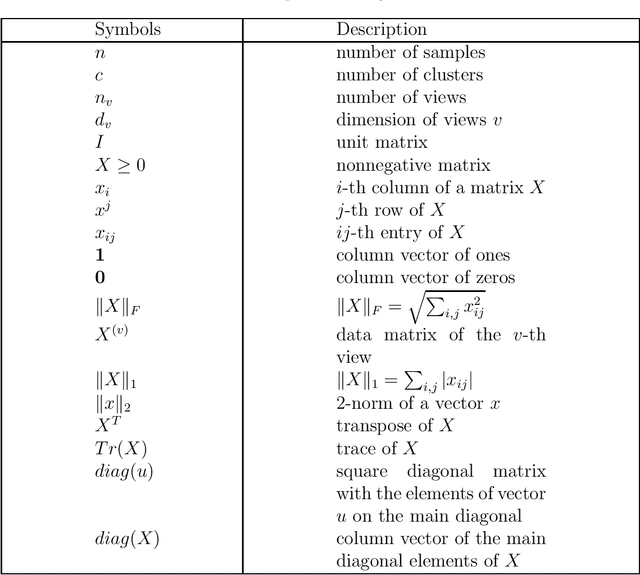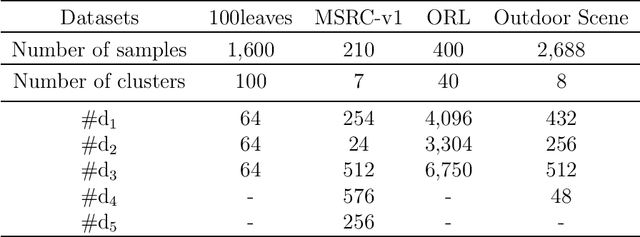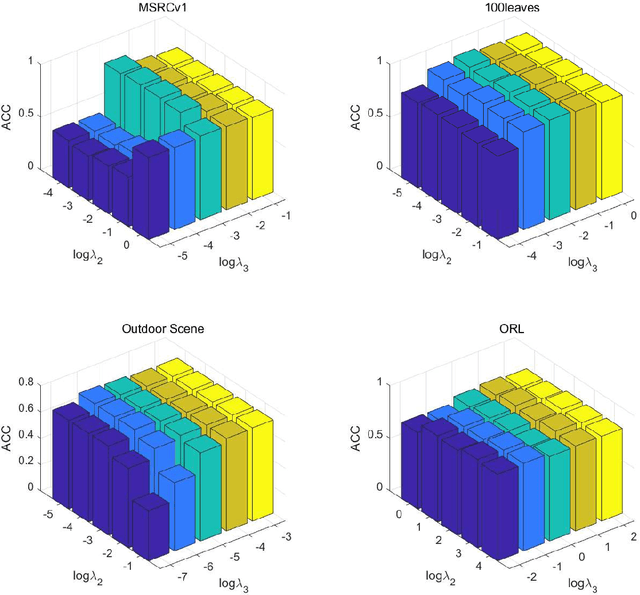Ting Shu
Survey on Large Language Model-Enhanced Reinforcement Learning: Concept, Taxonomy, and Methods
Mar 30, 2024Abstract:With extensive pre-trained knowledge and high-level general capabilities, large language models (LLMs) emerge as a promising avenue to augment reinforcement learning (RL) in aspects such as multi-task learning, sample efficiency, and task planning. In this survey, we provide a comprehensive review of the existing literature in $\textit{LLM-enhanced RL}$ and summarize its characteristics compared to conventional RL methods, aiming to clarify the research scope and directions for future studies. Utilizing the classical agent-environment interaction paradigm, we propose a structured taxonomy to systematically categorize LLMs' functionalities in RL, including four roles: information processor, reward designer, decision-maker, and generator. Additionally, for each role, we summarize the methodologies, analyze the specific RL challenges that are mitigated, and provide insights into future directions. Lastly, potential applications, prospective opportunities and challenges of the $\textit{LLM-enhanced RL}$ are discussed.
Free Lunch for Federated Remote Sensing Target Fine-Grained Classification: A Parameter-Efficient Framework
Jan 03, 2024Abstract:Remote Sensing Target Fine-grained Classification (TFGC) is of great significance in both military and civilian fields. Due to location differences, growth in data size, and centralized server storage constraints, these data are usually stored under different databases across regions/countries. However, privacy laws and national security concerns constrain researchers from accessing these sensitive remote sensing images for further analysis. Additionally, low-resource remote sensing devices encounter challenges in terms of communication overhead and efficiency when dealing with the ever-increasing data and model scales. To solve the above challenges, this paper proposes a novel Privacy-Reserving TFGC Framework based on Federated Learning, dubbed PRFL. The proposed framework allows each client to learn global and local knowledge to enhance the local representation of private data in environments with extreme statistical heterogeneity (non. Independent and Identically Distributed, IID). Thus, it provides highly customized models to clients with differentiated data distributions. Moreover, the framework minimizes communication overhead and improves efficiency while ensuring satisfactory performance, thereby enhancing robustness and practical applicability under resource-scarce conditions. We demonstrate the effectiveness of the proposed PRFL on the classical TFGC task by leveraging four public datasets.
MASK-CNN-Transformer For Real-Time Multi-Label Weather Recognition
Apr 28, 2023Abstract:Weather recognition is an essential support for many practical life applications, including traffic safety, environment, and meteorology. However, many existing related works cannot comprehensively describe weather conditions due to their complex co-occurrence dependencies. This paper proposes a novel multi-label weather recognition model considering these dependencies. The proposed model called MASK-Convolutional Neural Network-Transformer (MASK-CT) is based on the Transformer, the convolutional process, and the MASK mechanism. The model employs multiple convolutional layers to extract features from weather images and a Transformer encoder to calculate the probability of each weather condition based on the extracted features. To improve the generalization ability of MASK-CT, a MASK mechanism is used during the training phase. The effect of the MASK mechanism is explored and discussed. The Mask mechanism randomly withholds some information from one-pair training instances (one image and its corresponding label). There are two types of MASK methods. Specifically, MASK-I is designed and deployed on the image before feeding it into the weather feature extractor and MASK-II is applied to the image label. The Transformer encoder is then utilized on the randomly masked image features and labels. The experimental results from various real-world weather recognition datasets demonstrate that the proposed MASK-CT model outperforms state-of-the-art methods. Furthermore, the high-speed dynamic real-time weather recognition capability of the MASK-CT is evaluated.
TempEE: Temporal-Spatial Parallel Transformer for Radar Echo Extrapolation Beyond Auto-Regression
Apr 27, 2023



Abstract:The meteorological radar reflectivity data, also known as echo, plays a crucial role in predicting precipitation and enabling accurate and fast forecasting of short-term heavy rainfall without the need for complex Numerical Weather Prediction (NWP) model. Compared to conventional model, Deep Learning (DL)-based radar echo extrapolation algorithms are more effective and efficient. However, the development of highly reliable and generalized algorithms is hindered by three main bottlenecks: cumulative error spreading, imprecise representation of sparse echo distribution, and inaccurate description of non-stationary motion process. To address these issues, this paper presents a novel radar echo extrapolation algorithm that utilizes temporal-spatial correlation features and the Transformer technology. The algorithm extracts features from multi-frame echo images that accurately represent non-stationary motion processes for precipitation prediction. The proposed algorithm uses a novel parallel encoder based on Transformer technology to effectively and automatically extract echoes' temporal-spatial features. Furthermore, a Multi-level Temporal-Spatial attention mechanism is adopted to enhance the ability to perceive global-local information and highlight the task-related feature regions in a lightweight way. The proposed method's effectiveness has been valided on the classic radar echo extrapolation task using the real-world dataset. Numerous experiments have further demonstrated the effectiveness and necessity of various components of the proposed method.
Joint Featurewise Weighting and Lobal Structure Learning for Multi-view Subspace Clustering
Jul 25, 2020



Abstract:Multi-view clustering integrates multiple feature sets, which reveal distinct aspects of the data and provide complementary information to each other, to improve the clustering performance. It remains challenging to effectively exploit complementary information across multiple views since the original data often contain noise and are highly redundant. Moreover, most existing multi-view clustering methods only aim to explore the consistency of all views while ignoring the local structure of each view. However, it is necessary to take the local structure of each view into consideration, because different views would present different geometric structures while admitting the same cluster structure. To address the above issues, we propose a novel multi-view subspace clustering method via simultaneously assigning weights for different features and capturing local information of data in view-specific self-representation feature spaces. Especially, a common cluster structure regularization is adopted to guarantee consistency among different views. An efficient algorithm based on an augmented Lagrangian multiplier is also developed to solve the associated optimization problem. Experiments conducted on several benchmark datasets demonstrate that the proposed method achieves state-of-the-art performance. We provide the Matlab code on https://github.com/Ekin102003/JFLMSC.
 Add to Chrome
Add to Chrome Add to Firefox
Add to Firefox Add to Edge
Add to Edge